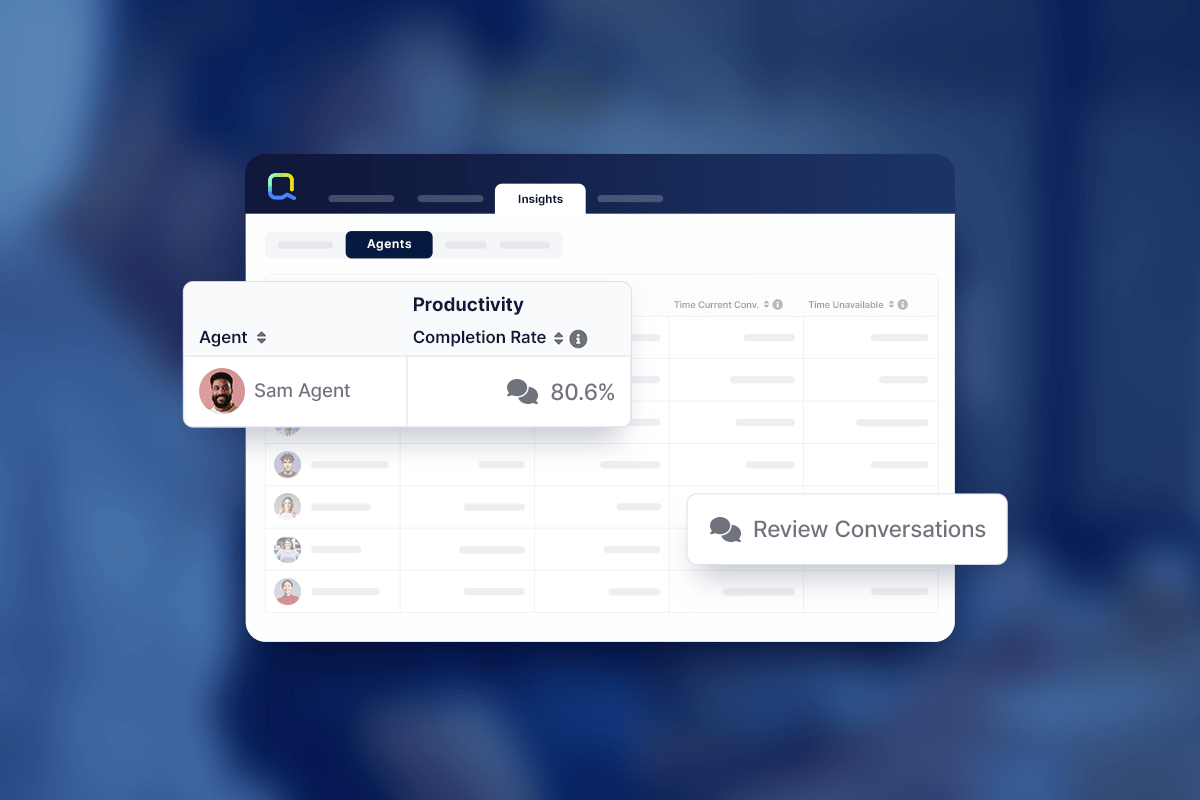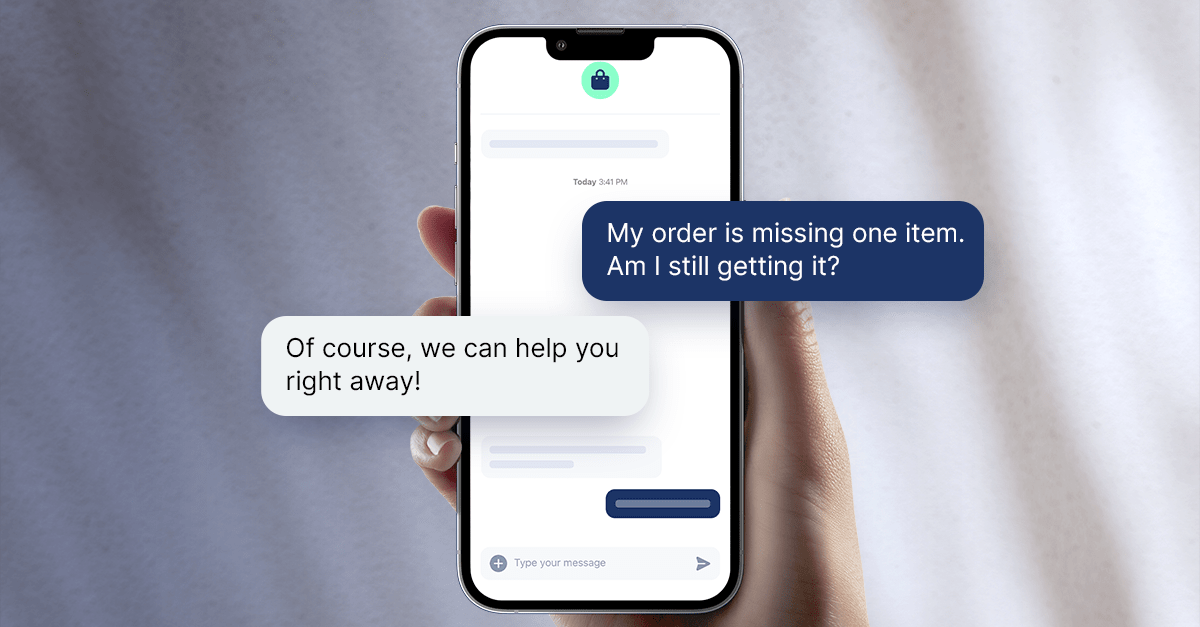In the ever-evolving customer service landscape, the role of contact center agents cannot be overstated. As the frontline representatives of a company, their performance directly impacts the quality of customer experience, influencing customer loyalty and brand reputation.
However, the traditional approach to managing agent performance – relying on periodic reviews and supervisor observations – has given way to a more sophisticated, data-driven strategy. For this reason, managing agent performance with a method that leverages the rich data generated by agent interactions to enhance service delivery, agent satisfaction, and operational efficiency is becoming more important all the time.
This article delves into this approach. We’ll begin by examining its benefits from three critical perspectives – the customer, the agent, and the contact center manager – before turning to a more granular breakdown of how you can leverage it in your contact center.
Why is it Important to Manage Agent Performance with Insights?
First, let’s start by justifying this project. While it’s true that very few people today would doubt the need to track some data related to what agents are doing all day, it’s still worth saying a few words about why it really is a crucial part of running a contact center.
To do this, we’ll focus on how three groups are impacted when agent performance is managed through insights: customers, the agents themselves, and contact center managers.
It’s Good for the Customers
The primary beneficiary of improved agent performance is the customer. Contact centers can tailor their service strategies by analyzing agent metrics to better meet customer needs and preferences. This data-driven approach allows for identifying common issues, customer pain points, and trends in customer behavior, enabling more personalized and effective interactions.
As agents become more adept at addressing customer needs swiftly and accurately, customer satisfaction levels rise. This enhances the individual customer’s experience and boosts the overall perception of the brand, fostering loyalty and encouraging positive word-of-mouth.
It’s Good for the Agents
Agents stand to gain immensely from a management strategy focused on data-driven insights. Firstly, performance feedback based on concrete metrics rather than subjective assessments leads to a fairer, more transparent work environment.
Agents receive specific, actionable feedback that helps them understand their strengths and which areas need improvement. This can be incredibly motivating and can drive them to begin proactively bolstering their skills.
Furthermore, insights from performance data can inform targeted training and development programs. For instance, if data indicates that an agent excels in handling certain inquiries but struggles with others, their manager can provide personalized training to bridge this gap. This helps agents grow professionally and increases their job satisfaction as they become more competent and confident in their roles.
It’s Good for Contact Center Managers
For those in charge of overseeing contact centers, managing agents through insights into their performance offers a powerful tool for cultivating operational excellence. It enables a more strategic approach to workforce management, where decisions are informed by data rather than gut feeling.
Managers can identify high performers and understand the behaviors that lead to success, allowing them to replicate these practices across the team. Intriguingly, this same mechanism is also at play in the efficiency boost seen by contact centers that adopt generative AI. When such centers train a model on the interactions of their best agents, the knowledge in those agents’ heads can be incorporated into the algorithm and utilized by much more junior agents.
The insights-driven approach also aids in resource allocation. By understanding the strengths and weaknesses of their team, managers can assign agents to the tasks they are most suited for, optimizing the center’s overall performance.
Additionally, insights into agent performance can highlight systemic issues or training gaps, providing managers with the opportunity to make structural changes that enhance efficiency and effectiveness.
Moreover, using agent insights for performance management supports a culture of continuous improvement. It encourages a feedback loop where agents are continually assessed, supported, and developed, driving the entire team towards higher performance standards. This improves the customer experience and contributes to a positive working environment where agents feel valued and empowered.
In summary, managing performance by tracking agent metrics is a holistic strategy that enhances the customer experience, supports agent development, and empowers managers to make informed decisions.
It fosters a culture of transparency, accountability, and continuous improvement, leading to operational excellence and elevated service standards in the contact center.
How to Use Agent Insights to Manage Performance
Now that we know what all the fuss is about, let’s turn to addressing our main question: how to use agent insights to correct, fine-tune, and optimize agent performance. This discussion will center specifically around Quiq’s Agent Insights tool, which is a best-in-class analytics offering that makes it easy to figure out what your agents are doing, where they could improve, and how that ultimately impacts the customers you serve.
Managing Agent Availability
To begin with, you need a way of understanding when your agents are free to handle an issue and when they’re preoccupied with other work. The three basic statuses an agent can have are “available,” “current conversations” (i.e. only working on the current batch of conversations), and “unavailable.” All three of these can be seen through Agent Insights, which allows you to select from over 50 different metrics, customizing and saving different views as you see fit.
The underlying metrics that go into understanding this dimension of agent performance are, of course, time-based. In essence, you want to evaluate the ratios between four quantities: the time the agent is available, the time the agent is online, the time the agent spends in a conversation, and the time an agent is unavailable.
As you’re no doubt aware, you don’t necessarily want to maximize the amount of time an agent spends in conversations, as this can quickly lead to burnout. Rather, you want to use these insights into agent performance to strike the best, most productive balance possible.
Managing Agent Workload
A related phenomenon you want to understand is the kind of workload your agents are operating under. The five metrics that underpin this are:
- Availability
- Number of completions per hour your agents are managing
- Overall utilization (i.e. the percentage of an agent’s available conversation limit they have filled in a given period).
- Average workload
- The amount of time agents spend waiting for a customer response.
All of this can be seen in Agent Insights. This view allows you to do many things to hone in on specific parts of your operation. You can sort by the amount of time your agents spend waiting for a reply from a customer, for example, or segment agents by e.g. role. If you’re seeing high waiting and low utilization, that means you are overstaffed and should probably have fewer agents.
If you’re seeing high waiting and high utilization, by contrast, you should make sure your agents know inactive conversations should be marked appropriately.
As with the previous section, you’re not necessarily looking to minimize availability or maximize completions per hour. You want to make sure that agents are working at a comfortable pace, and that they have time between issues to reflect on how they’re doing and think about whether they want to change anything in their approach.
But with proper data-driven insights, you can do much more to ensure your agents have the space they need to function optimally.
Managing Agent Efficiency
Speaking of functioning optimally, the last thing we want to examine is agent efficiency. By using Agent Insights, we can answer questions such as how well new agents are adjusting to their roles, how well your teams are working together, and how you can boost each agent’s output (without working them too hard).
The field of contact center analytics is large, but in the context of agent efficiency, you’ll want to examine metrics like completion rate, completions per hour, reopen rate, missed response rate, missed invitation rate, and any feedback customers have left after interacting with your agents.
This will give you an unprecedented peek into the moment-by-moment actions agents are taking, and furnish you with the hard facts you need to help them streamline their procedures. Imagine, for example, you’re seeing a lot of keyboard usage. This means the agent is probably not operating as efficiently as they could be, and you might be able to boost their numbers by training them to utilize Quiq’s Snippets tool.
Or, perhaps you’re seeing a remarkably high rate of clipboard usage. In that case, you’d want to look over the clipboard messages your agents are using and consider turning them into snippets, where they’d be available to everyone.
The Modern Approach to Managing Agents
Embracing agent insights for performance management marks a transformative step towards achieving operational excellence in contact centers. This data-driven approach not only elevates the customer service experience but also fosters a culture of continuous improvement and empowerment among agents.
By leveraging tools like Quiq’s Agent Insights, managers can unlock a comprehensive understanding of agent availability, workload, and efficiency, enabling informed decisions that benefit both the customer and the service team.
If you’re intrigued by the possibilities, contact us to schedule a demo today!



